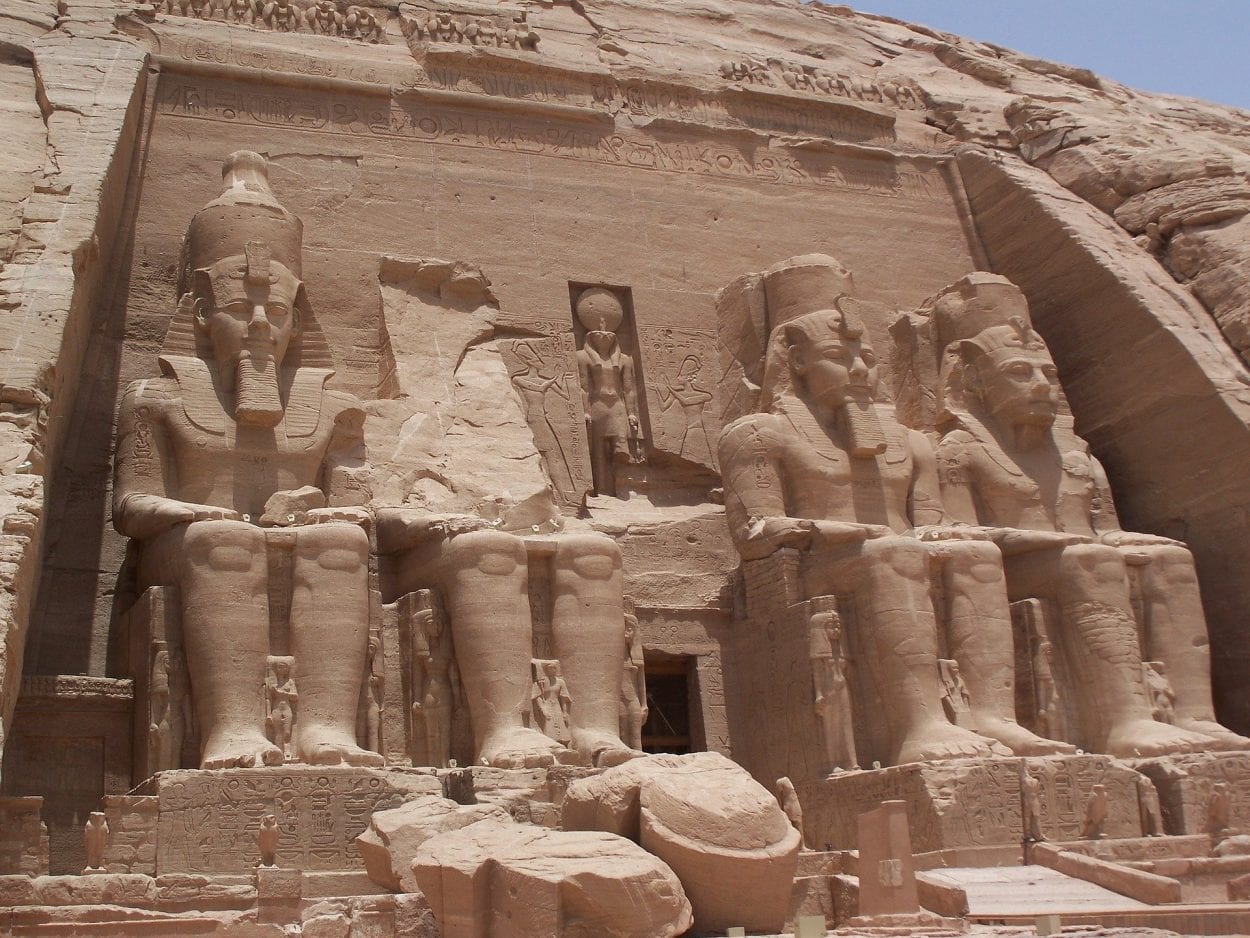The Great Temple of Ramesses II at Abu Simbel in Egypt has been digitally scanned to create a virtual interactive high-resolution environment.
The Abu Simbel temples are two massive rock-cut temples on the banks of Lake Nasser in Upper Egypt, that date from around 1264 BC during the reign of the Pharaoh Ramesses II. There are two temples, the Great Temple, dedicated to Ramesses II himself, and the Small Temple, dedicated to his chief wife Queen Nefertari.
The site was first discovered by Europeans in AD 1813, when Swiss orientalist Johann Ludwig Burckhardt stumbled across the top frieze of the Great Temple. This was later excavated by the Italian explorer Giovanni Belzoni in 1817, who cleared the entrance of sand revealing the four colossal, 20 m (66 ft) statues, each representing Ramesses II seated on a throne and wearing the double crown of Upper and Lower Egypt.
With the construction of the Aswan High Dam and Lake Nasser from 1958 and 1970, Abu Simbel was under threat from being submerged. A UNESCO campaign was created as part of an international effort to record and move the monuments to a new location on an artificial hill high above the Aswan High Dam reservoir.
The new interactive environment was commissioned by the Egyptian Ministry of Tourism and Antiquities, and created by nav-3d, a specialist in 3D reality scanning who previously published a similar interactive environment of the Wahty Tomb at the Saqqara necropolis.
View Full Screen – Click Here
Header Image Credit : Public Domain





